Model Context Protocol (MCP) finally gives AI models a way to access the business data needed to make them really useful at work. CData MCP Servers have the depth and performance to make sure AI has access to all of the answers.
Try them now for free →How to Easily Query Jira Service Management Data in OpenOffice Base
Connect to Jira Service Management data in OpenOffice Base using the CData ODBC Driver for Jira Service Management and generate reports with live data insights.
Apache OpenOffice Base is a versatile, free database tool that makes connecting and managing data easy. With CData ODBC Driver for Jira Service Management, you can seamlessly integrate and query live Jira Service Management data, bringing real-time insights directly into OpenOffice.
This guide simplifies the setup, showing you how to connect Jira Service Management to OpenOffice Base so you can easily generate reports, analyze trends, and make informed decisions right within your familiar workspace.
Overview
Here is an overview of the steps:
- CONFIGURE: Configure the DSN for Jira Service Management data in the CData ODBC Driver for Jira Service Management, using the required connection properties.
- CONNECT: Set up the ODBC connection in OpenOffice Base using the configured DSN.
- IMPORT: Once connected, review the available metadata and tables.
- CREATE: Create a report based on the queried Jira Service Management data data.
Configure the Jira Service Management DSN Using the CData ODBC Driver for Jira Service Management
To start, configure the DSN (Data Source Name) for Jira Service Management data in your system using the CData ODBC Driver for Jira Service Management. Download and install a 30-day free trial with all the features from here.
Once installed, launch the ODBC Data Source Administrator:
- On Windows: Search for ODBC Data Source Administrator in the Start menu and open the application.
- On Mac: Open Applications, go to Utilities, and select ODBC Manager.
- On Linux: Use the command line to launch ODBC Data Source Administrator or use unixODBC if installed.
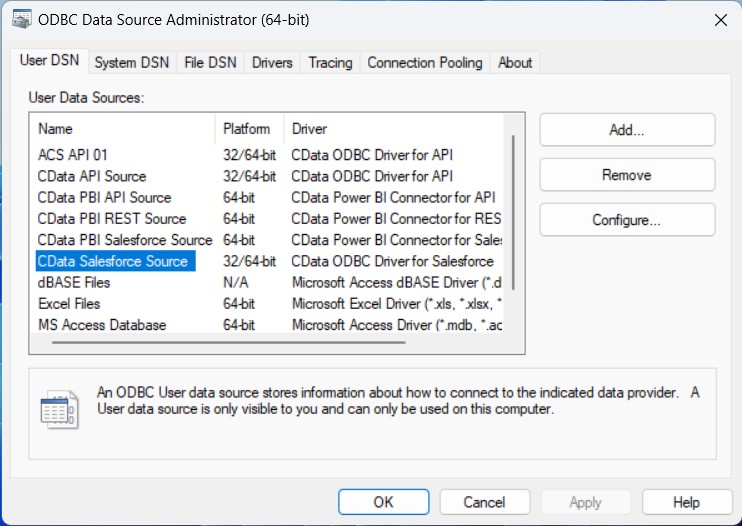
Once launched, double-click on the CData Jira Service Management data Source and enter the required values to establish a connection:
You can establish a connection to any Jira Service Desk Cloud account or Server instance.
Connecting with a Cloud Account
To connect to a Cloud account, you'll first need to retrieve an APIToken. To generate one, log in to your Atlassian account and navigate to API tokens > Create API token. The generated token will be displayed.
Supply the following to connect to data:
- User: Set this to the username of the authenticating user.
- APIToken: Set this to the API token found previously.
Connecting with a Service Account
To authenticate with a service account, supply the following connection properties:
- User: Set this to the username of the authenticating user.
- Password: Set this to the password of the authenticating user.
- URL: Set this to the URL associated with your JIRA Service Desk endpoint. For example, https://yoursitename.atlassian.net.
Note: Password has been deprecated for connecting to a Cloud Account and is now used only to connect to a Server Instance.
Accessing Custom Fields
By default, the connector only surfaces system fields. To access the custom fields for Issues, set IncludeCustomFields.
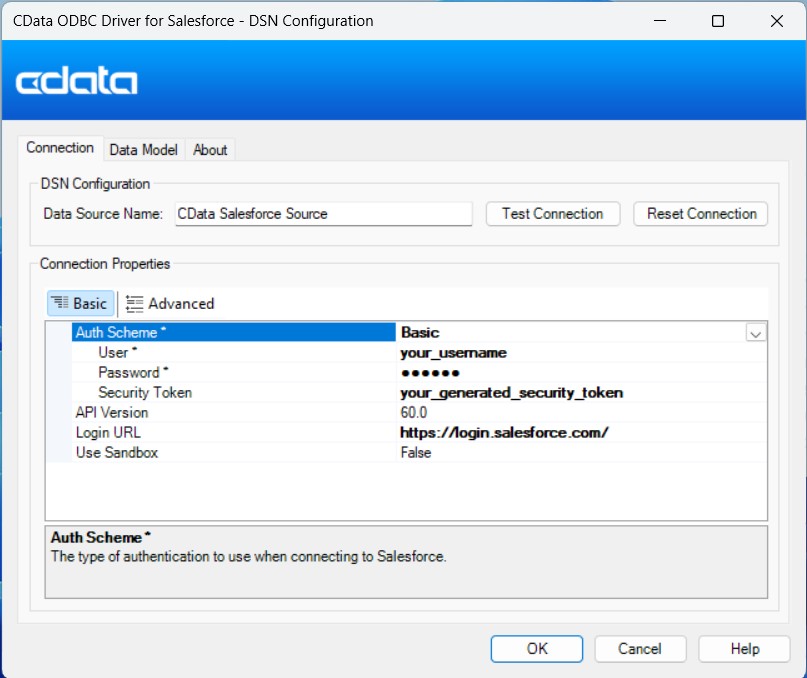
Setup an ODBC Connection in OpenOffice Base
Once you've set up the DSN, it's time to connect to it in OpenOffice Base and start querying data:
- Launch OpenOffice Base and select Database from the home screen.
- In the Database Wizard, choose ODBC from the 'Connect to an existing database' option and click Next.
- Click Browse to locate and select the DSN you created, then click OK.
- Enter the username associated with the DSN, click Test Connection to verify, and then click Next.
- Finally, click Finish to save the new database file to your desired directory. This will connect OpenOffice Base to your live Jira Service Management data data, ready for querying and analysis.
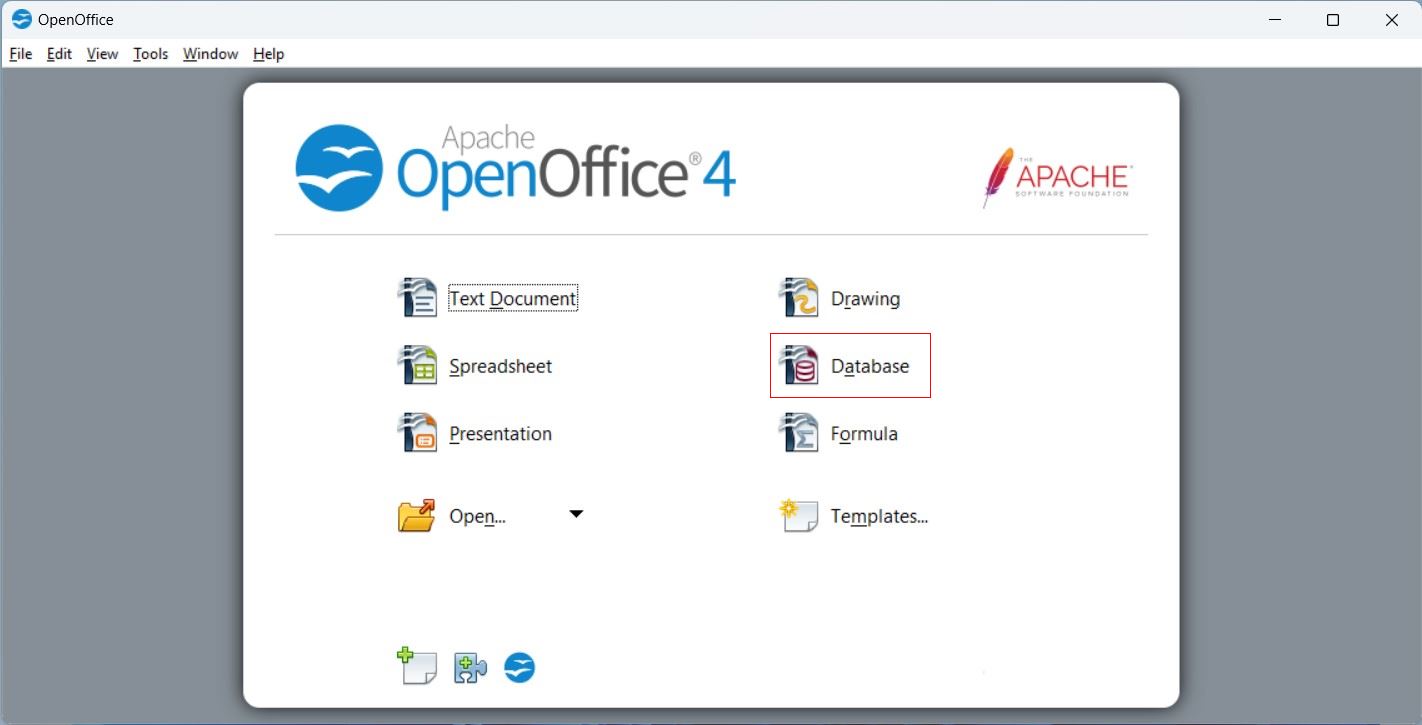
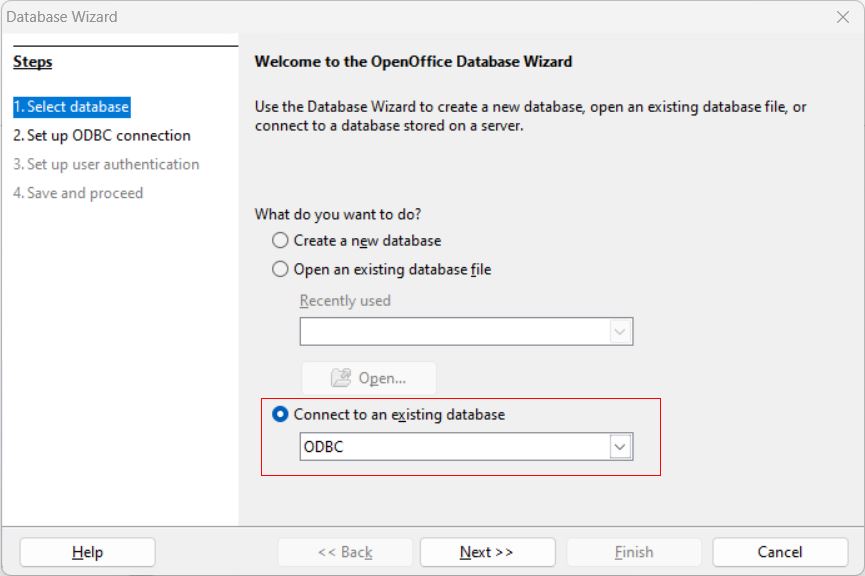
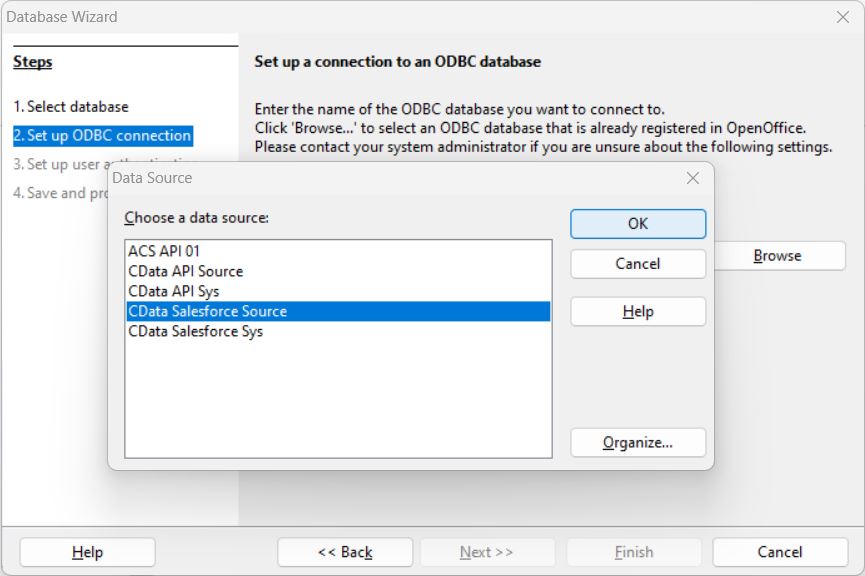
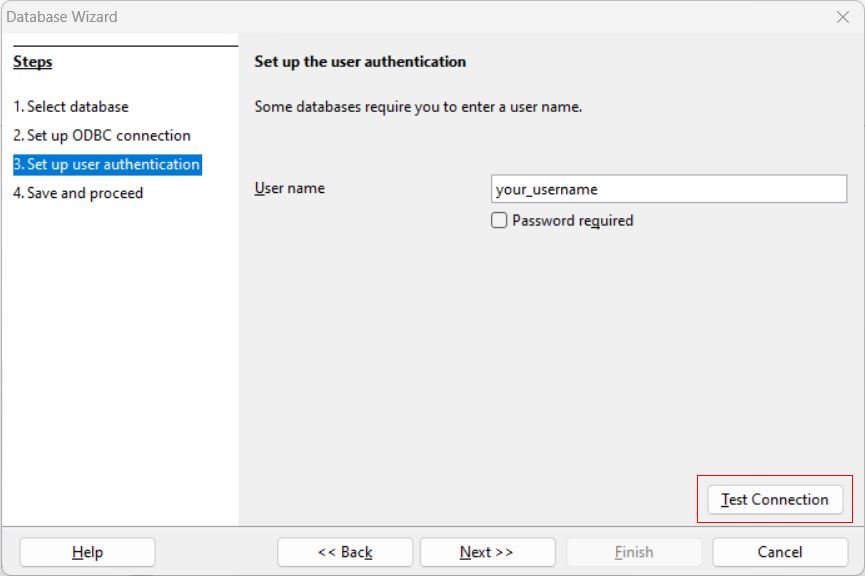
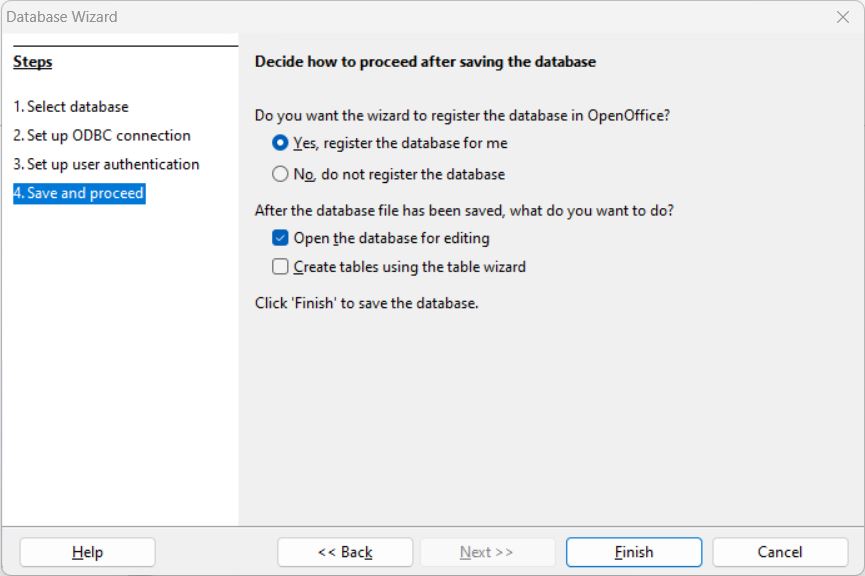
Your connection is now established — ready to query and analyze data seamlessly within OpenOffice Base.
Review the Metadata and Tables
After the database file is created and the connection is established, the table list will automatically display all available Jira Service Management data objects.
- Review the Jira Service Management data Object List: In the left pane, click on Tables to view the Jira Service Management data objects now available within OpenOffice Base.
- View Object Data: Click on any object to view its contents. The Jira Service Management data data will display directly within OpenOffice Base, allowing you to review records and fields with ease.
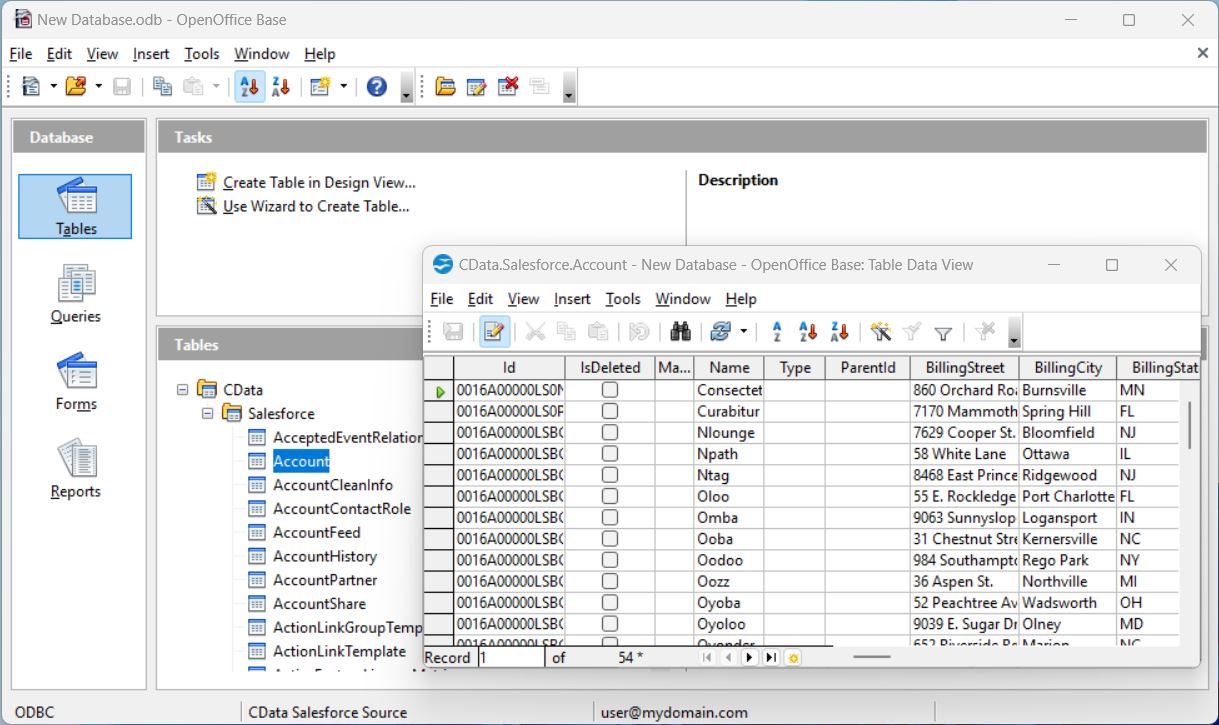
That's it! You have now successfully established a connection to Jira Service Management data in OpenOffice Base, with data readily available for analysis and reporting.
Create a Report
Now, let's generate a report based on your Jira Service Management data data.
- Open your database and go to the Reports tab, then select Create Report Using Wizard.
- In the Report Wizard, choose the Jira Service Management data table from the Table or Query section. Select the columns from Available Fields that you want to include in your report and move them to the Fields in Report section using the arrows.
- After configuring the fields, click Finish to generate your report.
- Analyze, adjust, save, and publish the report as needed.
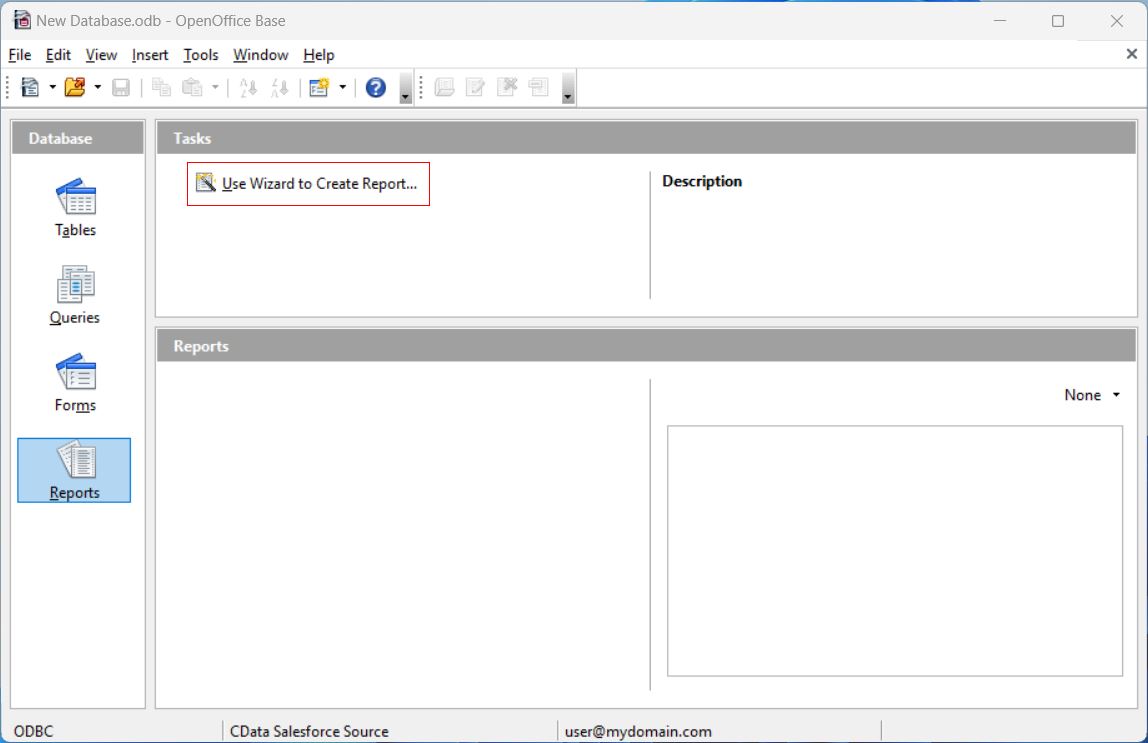
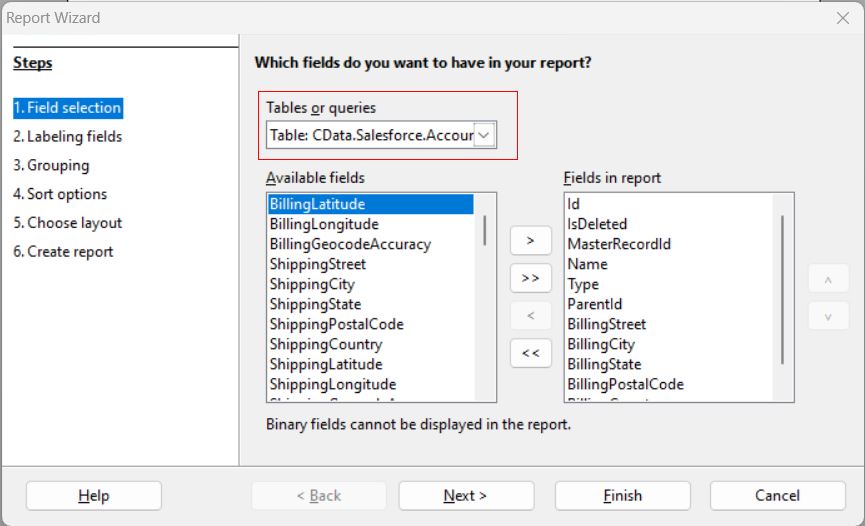
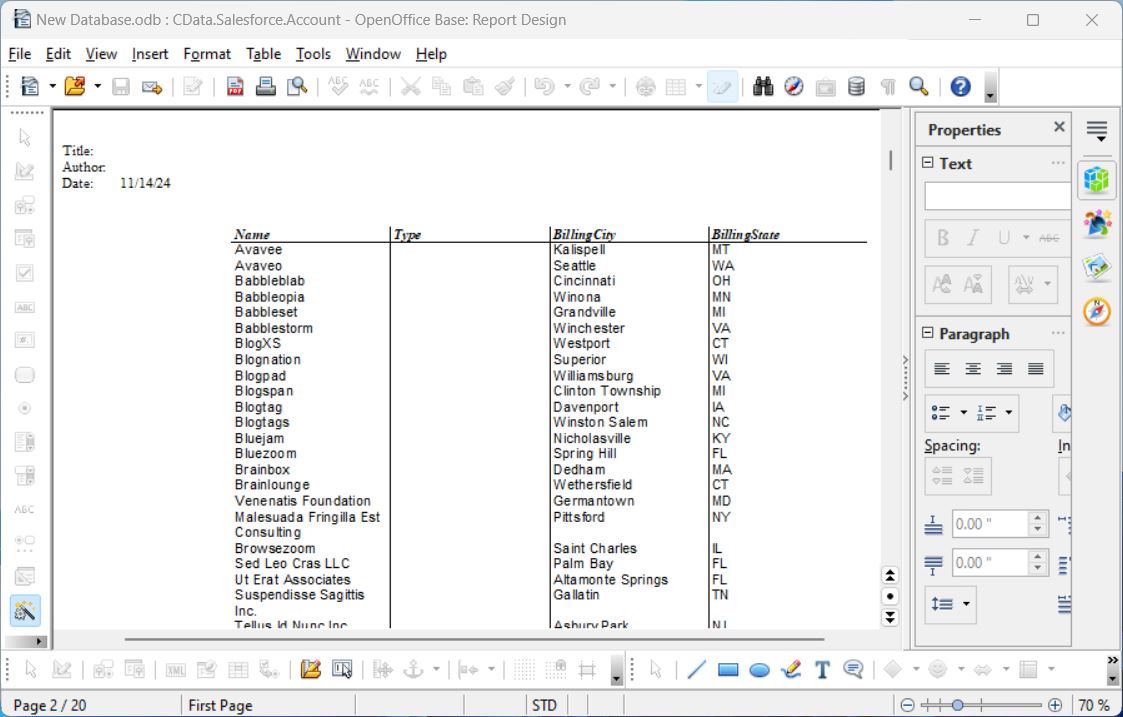
Your report is now created, drawing live data directly from Jira Service Management data, and ready for analysis.
Try CData Free for 30 Days
Experience the power of live Jira Service Management data data at your fingertips and seamlessly integrate it into OpenOffice Base. Start your free trial today!

